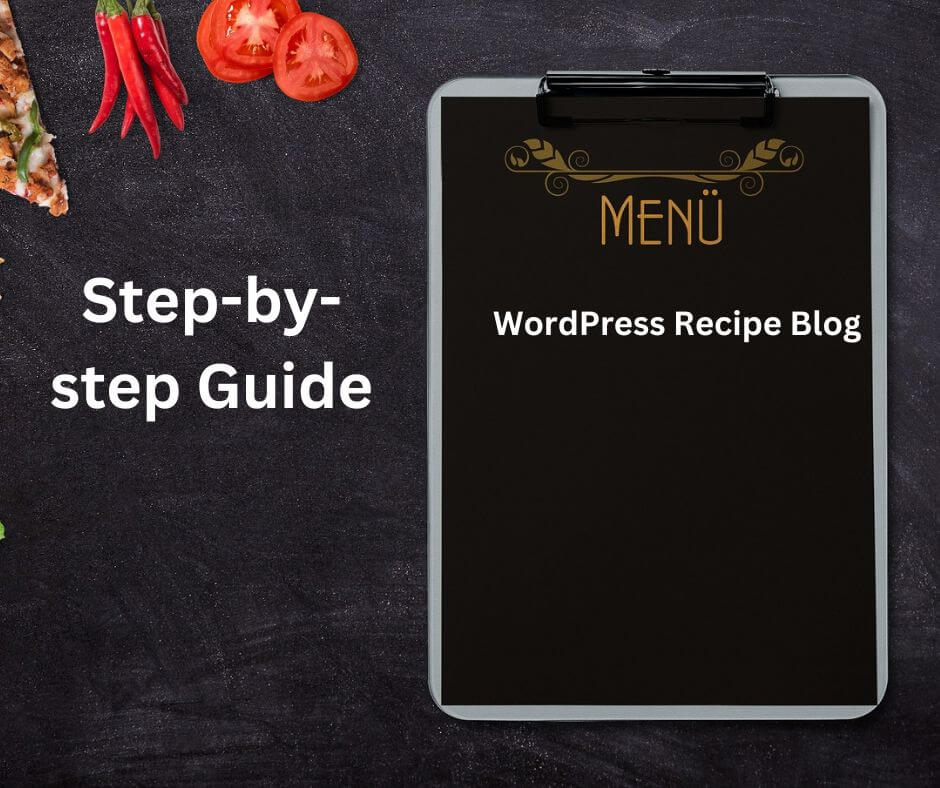Starting a recipe blog is fun and rewarding. You can share your love for cooking and potentially make some money. With the proper steps, you can create a successful blog that showcases your culinary skills and generates income.
Here’s a simple guide to help you start your recipe blog and turn it into a profitable business.
1. Find Your Unique Niche
Choose Your Niche: Decide what type of recipes you’ll focus on. Will vegan dishes, gluten-free meals, international cuisine, diet cooking, or quick and easy dinners? Picking a niche helps you stand out and attract a dedicated audience.
Research Competitors: Look at other blogs in your chosen niche. See what they do well and where there might be gaps you can fill. This helps you understand what works and how you can offer something unique.
2. Choose Your Blogging Platform
Self-Hosted vs. Free Platforms: For serious bloggers aiming to make money, a self-hosted platform like WordPress.org is recommended. You must buy a domain name, host it, and install WordPress. It offers more control and flexibility. Free platforms like WordPress.com or Blogger are more accessible but have more limitations.
Select a Domain and Hosting: Pick a memorable domain name related to your niche. Good hosting options include Bluehost, SiteGround, and HostGator. Look for features like reliable uptime, good customer support, and scalability.
3. Design Your Blog
Choose a Theme: Select a clean, attractive theme that suits your content. Premium themes from WordPress and Wix offer more customization options and support.
Customize Your Design: Make sure your blog is easy to navigate, loads quickly, and looks good on all devices. Use high-quality images and a consistent color scheme to create a professional appearance.
4. Create Great Content
Plan Your Content: Create a content calendar to ensure regular posting. Start with critical topics in your niche and diversify with recipes, how-to guides, cooking tips, and personal stories.
Optimize for SEO: Use tools like Google Keyword Planner or SEMrush to find popular search terms. Include these keywords naturally in your posts, titles, and descriptions to help your blog rank higher in search results. Here is an article to help you apply the best SEO tips for your recipe blog.
Invest in Photography: Good visuals are crucial. Use a decent camera and learn basic food photography techniques. Well-lit, appetizing images can significantly boost your blog’s appeal and engagement.
5. Build Your Audience
Leverage Social Media: Share your content on platforms like Instagram, Pinterest, Facebook, and Twitter. Each has its strengths: Instagram is great for visuals, Pinterest is great for driving traffic, and Facebook is great for community building.
Engage with Your Audience: Respond to blog and social media comments. Join relevant forums and collaborate with other bloggers. Building a community around your blog fosters loyalty and encourages repeat visits.
Utilize Email Marketing: Create an email list and send regular newsletters with your latest posts and exclusive content. Email marketing is a direct way to reach your audience and drive traffic to your blog. Use tools like Mailchimp or ConvertKit to manage your emails.
6. Monetize Your Blog
Affiliate Marketing: Join affiliate programs related to your niche. Promote kitchen tools, cookbooks, or food products in your posts. Earn a commission when readers make purchases through your links.
Display Ads: Sign up for ad networks like Google AdSense or Mediavine. Display ads on your blog and earn money based on impressions or clicks.
Sponsored Content: Work with brands to create sponsored posts. Reach out to brands that fit your niche and negotiate a fee or product exchange to feature their products. Be transparent about sponsored content with your audience.
Sell Products or Services: Consider creating products like e-books, cooking courses, or branded merchandise. Offer services like cooking classes or meal planning consultations.
Membership or Subscription Model: Offer premium content to subscribers who pay a monthly fee. This could include exclusive recipes, video tutorials, or access to a private community.
7. Track Your Progress
Use Analytics: Monitor your blog’s performance with tools like Google Analytics. Track metrics like traffic, bounce rate, and user engagement to see what’s working and needs improvement.
A/B Testing: Experiment with different content formats, headlines, and layouts to see what resonates best with your audience. Use A/B testing to make data-driven decisions.
Stay Updated: The blogging world is constantly changing. Follow industry blogs, attend webinars, and join online communities to stay informed about the latest trends and best practices.
Conclusion
Starting a recipe blog takes time, effort, and strategy. Finding your niche, creating quality content, building an engaged audience, and monetizing your blog can turn your passion for cooking into a profitable business. Consistency and authenticity are essential. Happy blogging!
